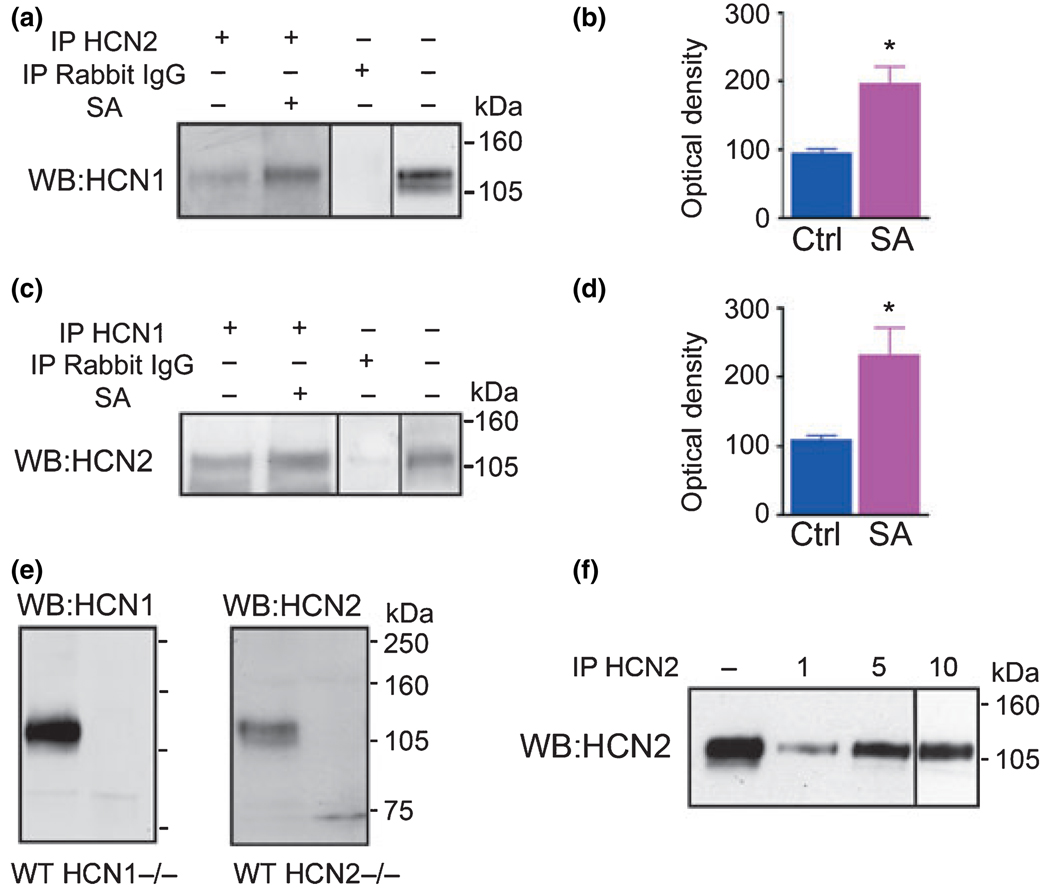Fig. 1.
Neuronal activity bursts (seizures) increase the membrane expression of heteromeric HCN1/HCN2 channels. (a) Immunoprecipitation (IP) with an antiserum to the HCN2 channel isoform followed by western blot (WB) analysis for HCN1 shows enhanced co-association of HCN1/HCN2 in hippocampi from animals subjected to experimental seizures (SA), as quantified in (b). The immunoreactive HCN1 band has an apparent molecular weight of ~125 kDa. The specificity of the immunoprecipitation is supported by the absence of immunoreactive band when IgG is substituted for anti-HCN2. The correspondence of the co-precipitated band to native HCN1 is demonstrated by comparing it to a WB from the same tissue. (c and d) The increased co-association of HCN1 and HCN2 isoforms is also apparent when immunoprecipitation (IP) is performed using an antiserum to HCN1 and the precipitated channels probed by WB analysis for HCN2. (e) The specificity of the HCN1 and HCN2 antisera is evident from the absence of an immunoreactive band of the appropriate molecular weight in brains from mice lacking these channels (HCN1−/− and HCN2−/−). (f) The efficiency of precipitating HCN channels with the antisera used was evaluated using escalated amounts of each anti-serum. Input and HCN2 immunoreactive bands precipitated with 1, 5, and 10 µL anti-HCN2 are shown. Efficiency for this antibody was 20.4 ± 2.8%, 66.1 ± 8.1%, and 36% (n = 2), respectively. Efficiency of HCN1 antiserum in precipitating the same isoform was 9.7%, 30.5%, and 26.5%, respectively (not shown).

